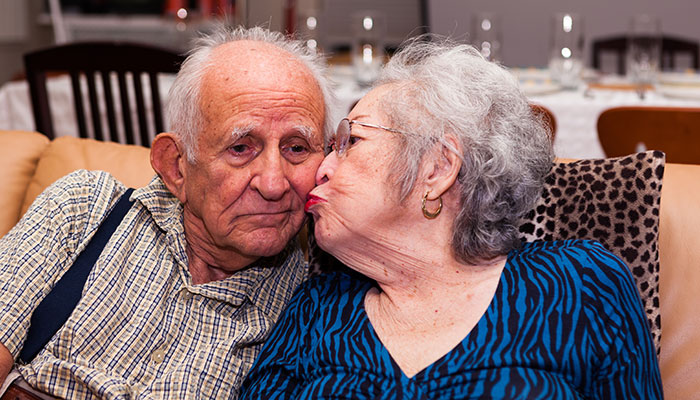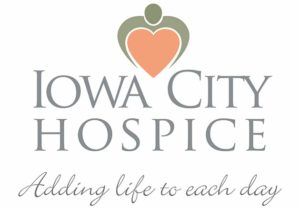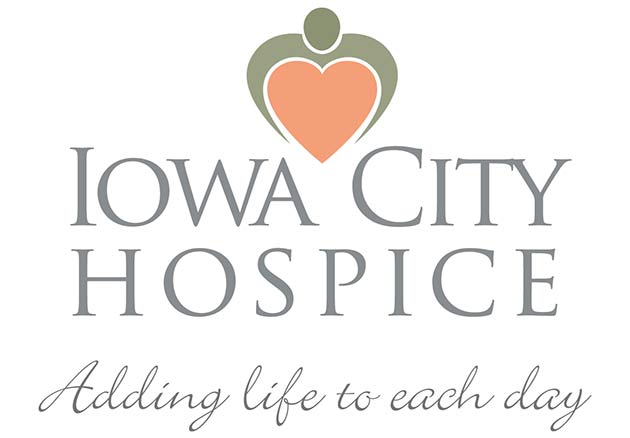Family Caregiver Connection
Helpful tips for family caregivers
February/March 2014
There are many losses on the elder care journey. This month we help you address the losses of dementia. We also help you prepare for an elder’s loss of independence.
- Family grief in the face of dementia
- Before you suggest assisted living
- Subtle signs of a heart attack
Family grief in the face of dementia
 Grief is the expected response to a loved one’s death. We expect to mourn, and we receive comfort from others. But in the context of a dementia, such as Alzheimer’s disease, the loss is not as clear cut. Your loved one is “here but not here.” And you do not receive the same support or acknowledgment for the very real losses of
Grief is the expected response to a loved one’s death. We expect to mourn, and we receive comfort from others. But in the context of a dementia, such as Alzheimer’s disease, the loss is not as clear cut. Your loved one is “here but not here.” And you do not receive the same support or acknowledgment for the very real losses of
- the relationship as you’ve known it;
- shared conversation and pastimes;
- predictability in your everyday life;
- options for your future, and theirs.
These types of losses are felt daily, like little deaths. They generate feelings of grief, but there is no closure for you and no public validation. Grief of this nature is confusing. As such, it is sometimes referred to as “ambiguous loss.”
Try these strategies for living with ambiguity and grief.
- Acknowledge and accept. Many people seek relief from ambiguity through an all-or-nothing interpretation. Learning to acknowledge and accept the paradox of good and bad together reduces the stress of ambiguous loss. It requires teaching yourself to hold on and let go at the same time. Try practicing “both/and” thinking. For instance, “I am both sad at Mom’s decline, and it’s a relief to realize she’s not so judgmental anymore.”
- Create rituals. Rituals allow you to honor a loss and allow others to publicly acknowledge the impact of that loss. For instance, at such time that Dad must give up driving, consider gathering a few friends to polish his car one last time.
- Find support. Get validation from others who understand the stress of ambiguous loss. Consider joining a caregiver support group in person, online, or one that meets by telephone.
- Engage certainty. To counterbalance the lack of predictability in your life, do things that give you the satisfying feeling of accomplishment. This might be taking a class, creating a scrapbook, or learning a new skill.
Return to top
Before you suggest assisted living
 “On your mark! Get set! Wait!” That is the experience, and in fact the best strategy, when hoping to persuade an older relative to move to assisted living.
“On your mark! Get set! Wait!” That is the experience, and in fact the best strategy, when hoping to persuade an older relative to move to assisted living.
You may feel sure your mom or dad needs extra help. But they may not agree. This is a common dilemma. For instance, you may have noticed your loved one
- seems tired of cooking and is eating less and less
- forgets to take medications
- is unsteady when walking or has bruises that may indicate a fall
- is having difficulty with dressing
- rarely leaves the house and has little social contact
Unless there is a serious safety risk, don’t push for a move. If your relative is resistant, pushing will likely backfire. Instead, “get set” by doing your homework on your own beforehand so you are ready when things change (and they usually do).
- Figure out the finances. Medicare and Medicaid do not cover assisted living. Learn about your relative’s income and assets. What could be afforded monthly for rent, food and care? Do they have long-term care insurance? Does your loved one qualify for veterans’ assistance?
- Consider needs and preferences. If you had to guess, would your relative like an active, urban setting or a quieter environment? Are there particular hobbies or pastimes of interest? Do they need special assistance with diet, medications, or going to the bathroom?
- Look at facilities. Are there facilities in dad’s current neighborhood? Any close to you or another family member? Any that his friends live in already? Create a list of facilities that you can visit first on your own. Narrow the options down to a short list of ones that deserve serious consideration once your loved one is ready to consider this option.
You might also consider hiring a care manager to save you time. These professionals know the pros and cons of all the local facilities. Unlike “free” referral services that receive payments from the facility, care managers have no potential for conflict of interest. Their recommendations are based on a genuine belief that a particular facility is the best fit for your family.
Return to topSubtle signs of a heart attack
It may surprise you to learn that the signs of a heart attack, especially in women, can be very different than those for men.
Subtle signs of a heart attack
We all know the classic heart attack portrayed over and over again in movies and on TV: Someone writhing in sudden, severe chest pain.
But many heart attacks aren’t like that at all. Instead, they start slowly, typically with some mild, on/off pain or tightness in the chest. These signs are so much less dramatic than what people expect, they too often are ignored. The result, sadly, is often fatal when in fact a prompt response could have saved a loved one’s life.
Symptoms to watch for in both men and women
- Pressure or fullness in the center of the chest. This is the most common symptom. It is often experienced as a sensation of tightness. It is sometimes confused with indigestion. The sensation may last for several minutes or it may come and go.
- Pain in other areas above the belly button. For instance, discomfort in the neck, jaw, back, or stomach, or in one or both arms.
- Shortness of breath. Feeling suddenly out of breath or extra tired for no reason.
- Nausea, lightheadedness, breaking out in a cold sweat, or fainting.
Women may have no chest pain. Instead, women are especially likely to have the less-common symptoms. This can lead to a tragic misdiagnosis, such as thinking it’s just the flu or an upset tummy. If you are caring for a woman—or are a woman yourself—consider that unexplained fatigue, nausea, shortness of breath, and/or upper body pains may be symptoms of a heart attack.
People with diabetes may also have very mild outward signs when a heart attack is occurring. If your relative has diabetes, talk with the doctor about heart attack risk.
Regardless of how they present, heart attacks damage heart tissue. And they can be deadly if prompt treatment is not provided. If you see any of these symptoms, call 911 right away. Every minute counts!
Return to top

